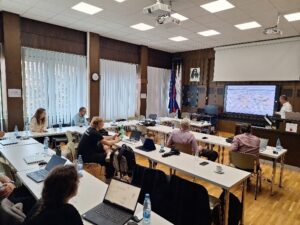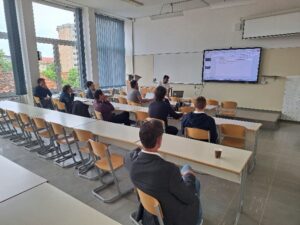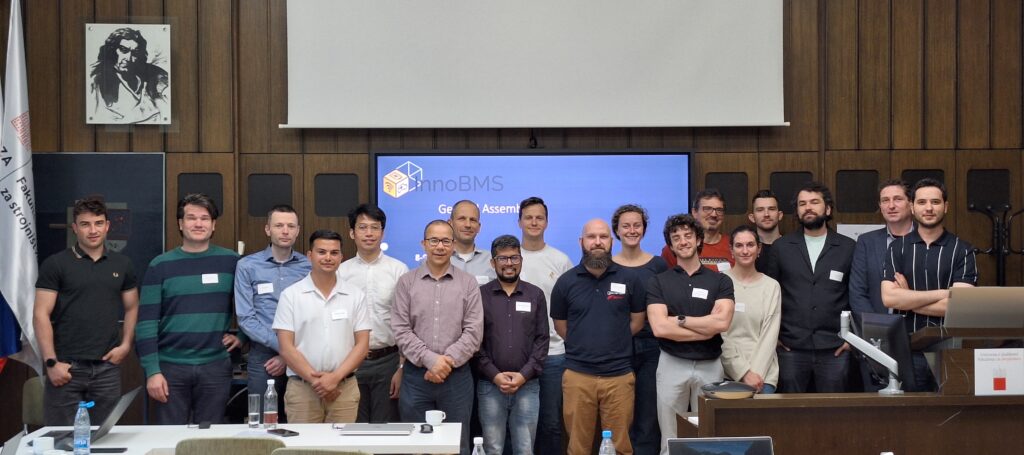General Assembly #3
The third General Assembly was held 8 and 9 May 2025 in Ljubljana, Slovenia and hosted by our partner, University of Ljubljana (UL). The first day was dedicated to a cluster workshop with sister project NEXTBMS (more on this below) and a presentation outlining the results of 4 work packages (WPs) over the last several months.
The consortium was briefed on the testing of different cells, the start of data driven algorithm activities on the edge and cloud (WP2 on Advanced functionalities, simulation and testing methods), and the BMS architectures that will be implemented in the two demonstrations (WP3 on BMS Software & connected functionalities integration).
Day one concluded with an overview of the testing setups and an online tour from Typhoon Hill (THIL) of the virtual testbed (WP5 on Testing, validation and demonstration).
The second day started with a detailed overview of the hardware components that have been selected and agreed upon to use in the demonstrations (WP4 on Advanced BMS hardware and integration with advanced sensors) and ended with a plenary breakout session in which it was unanimously decided to freeze the BMS Hardware (HW) and Software (SW) components. This decision marks an important moment as InnoBMS enters the next phase of milestones.
Cluster workshop with NEXTBMS
On the first day, Thursday 8 May 2025, the InnoBMS consortium joined the NEXTBMS consortium to have its second cluster workshop. Sharing some of the same partners, the workshop was a great opportunity to align the projects. Whereas the first workshop was dedicated to explore the synergies between the two projects, the second workshop was a more hands on workshop in which the two consortia where split up in three working groups to discuss the following: How to define the technical and common challenges between the two projects and how to implement this in future steps of exchange of experience, knowledge, data, etc.
The three working groups spent time to define which challenges both projects face. After an hour, the groups came together and presented their conclusions. Interestingly, all three groups discussed the main question from a total different angle. The first group looked at common technical challenges related to data acquisition and how to overcome this, to the transfer of data between the two projects and very important, how to make compatible the software interactions and interphases between the two projects. In the last a concrete action was filtered to continue the InnoBMS-NEXTBMS collaboration through an online workshop. The second group took another approach and formulated the technical challenges per project and how to overcome these in the future. Interesting about this approach was to see the similarities but also differences between the projects (same physics-based models for example but in lower/higher level of application and hence with its own challenges). The third group took a more organizational approach and discussed challenges like exchanging data, using different OS/interoperability systems, and how to integrate different applications.




